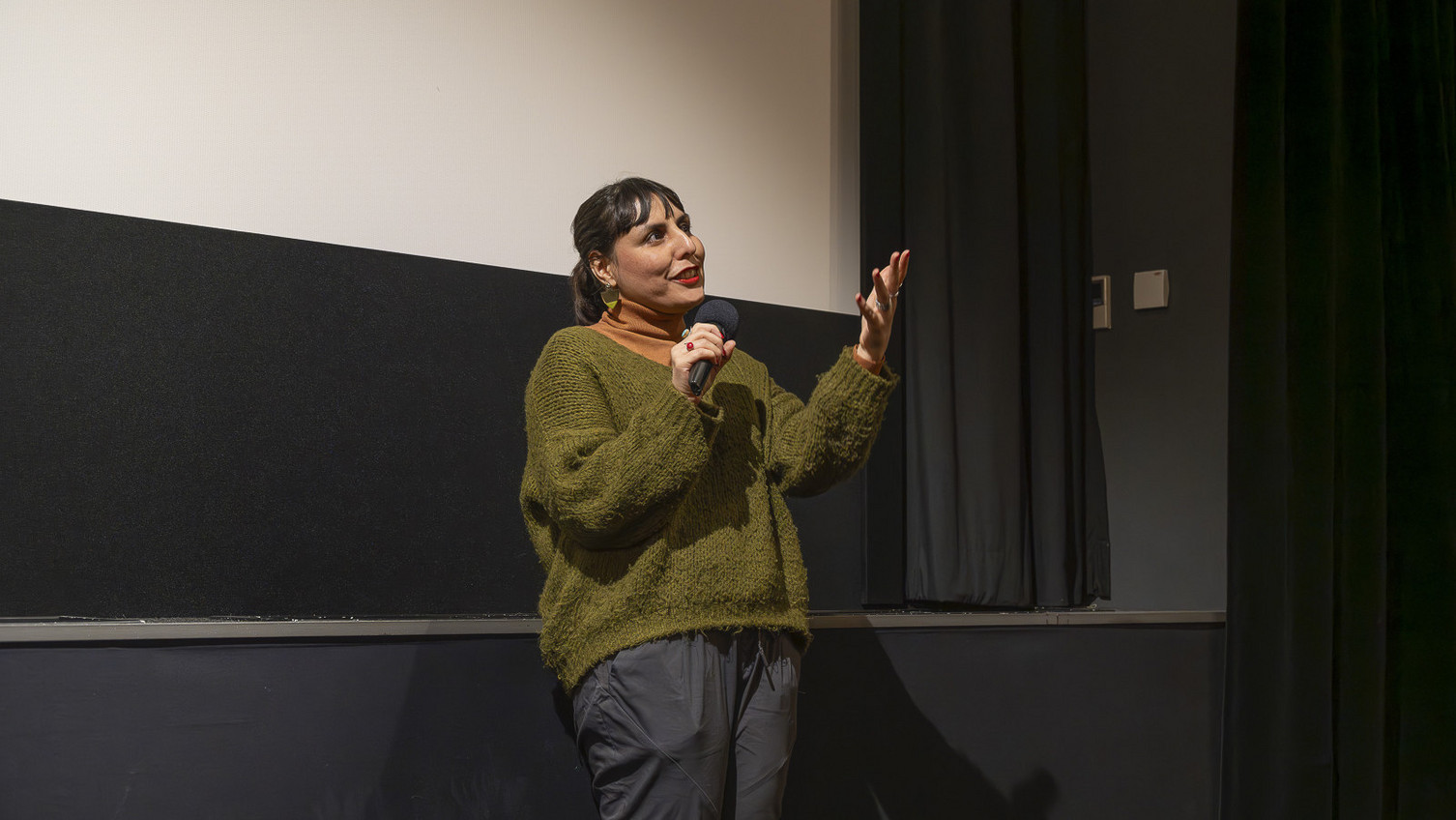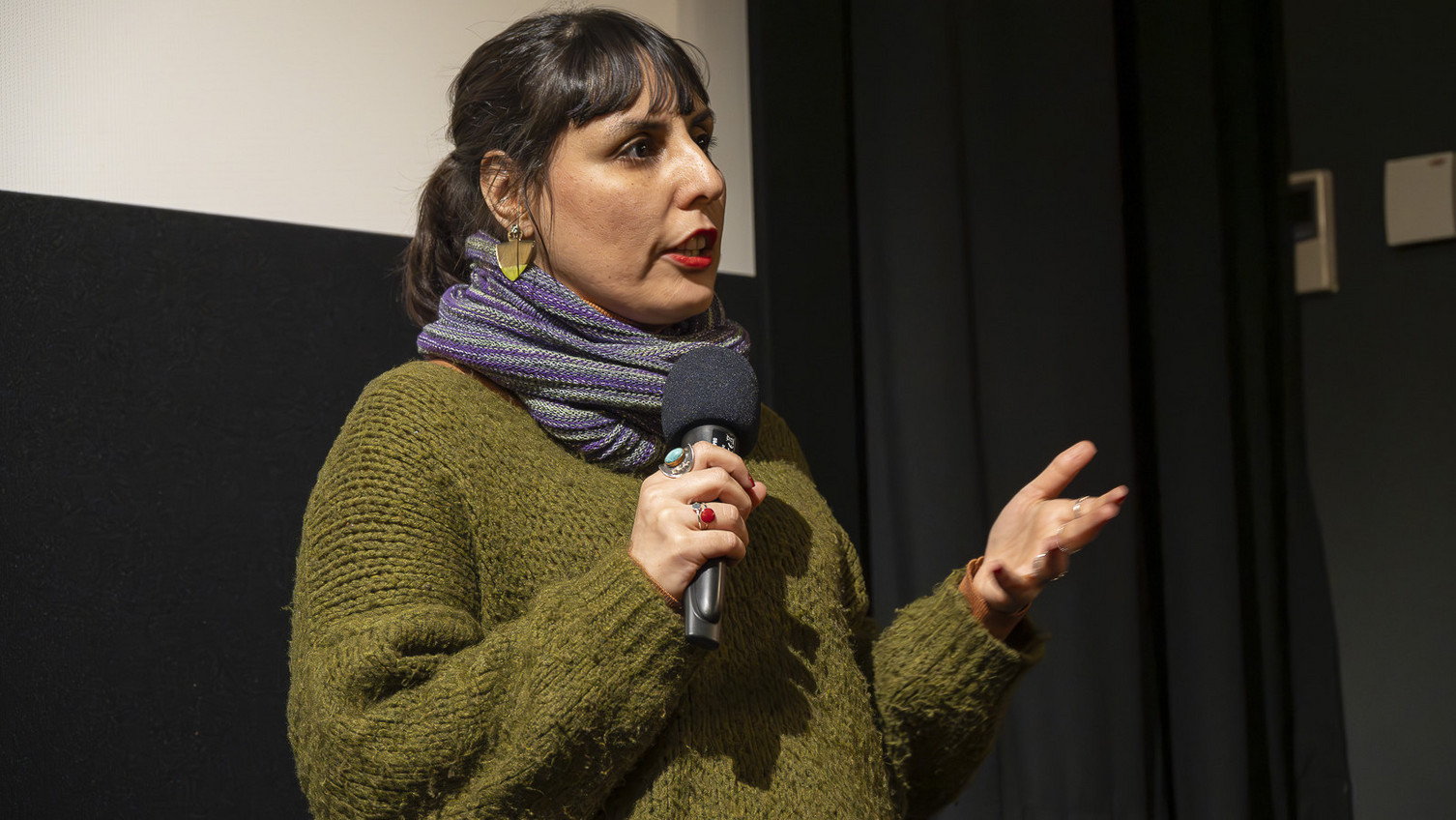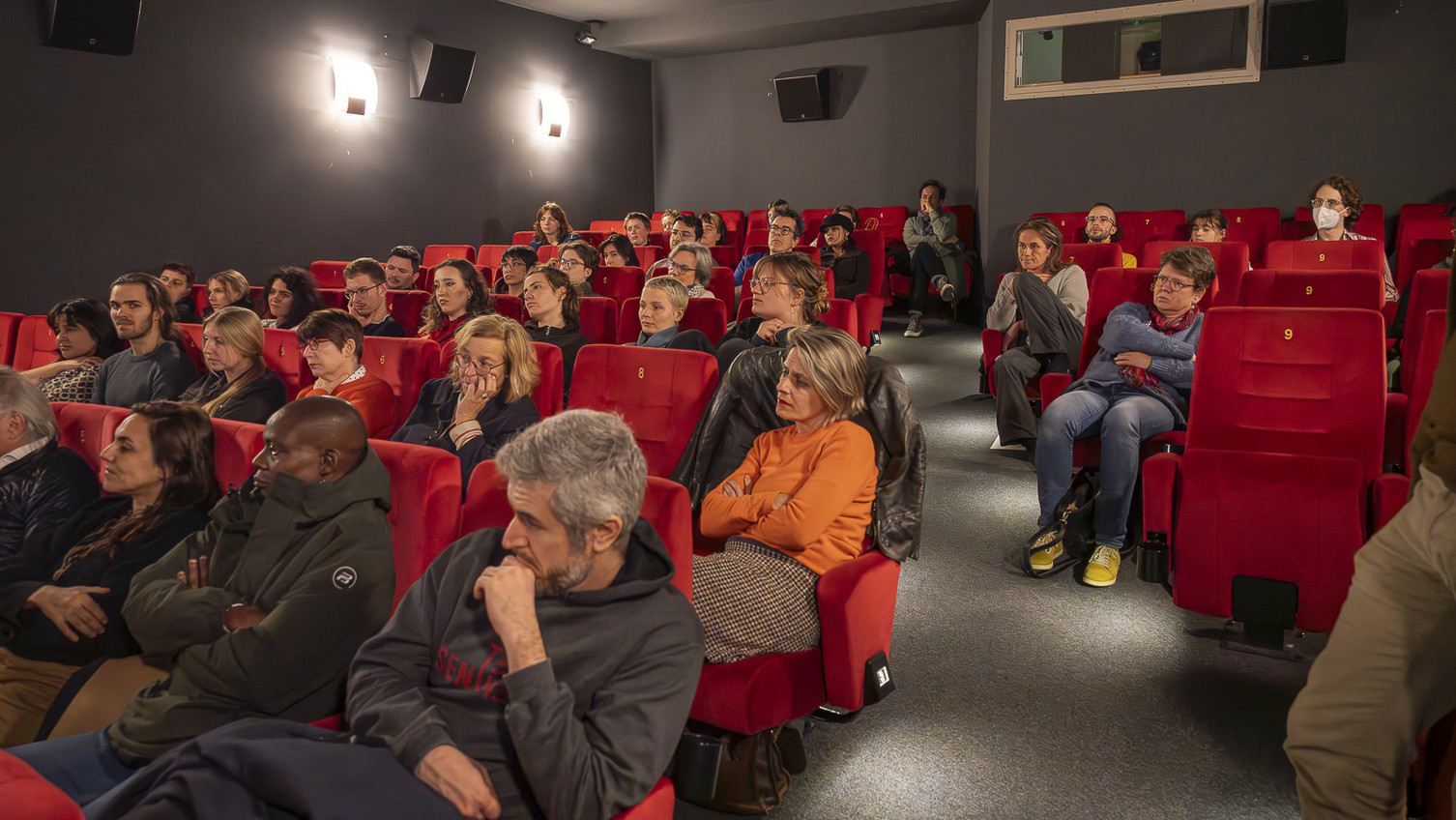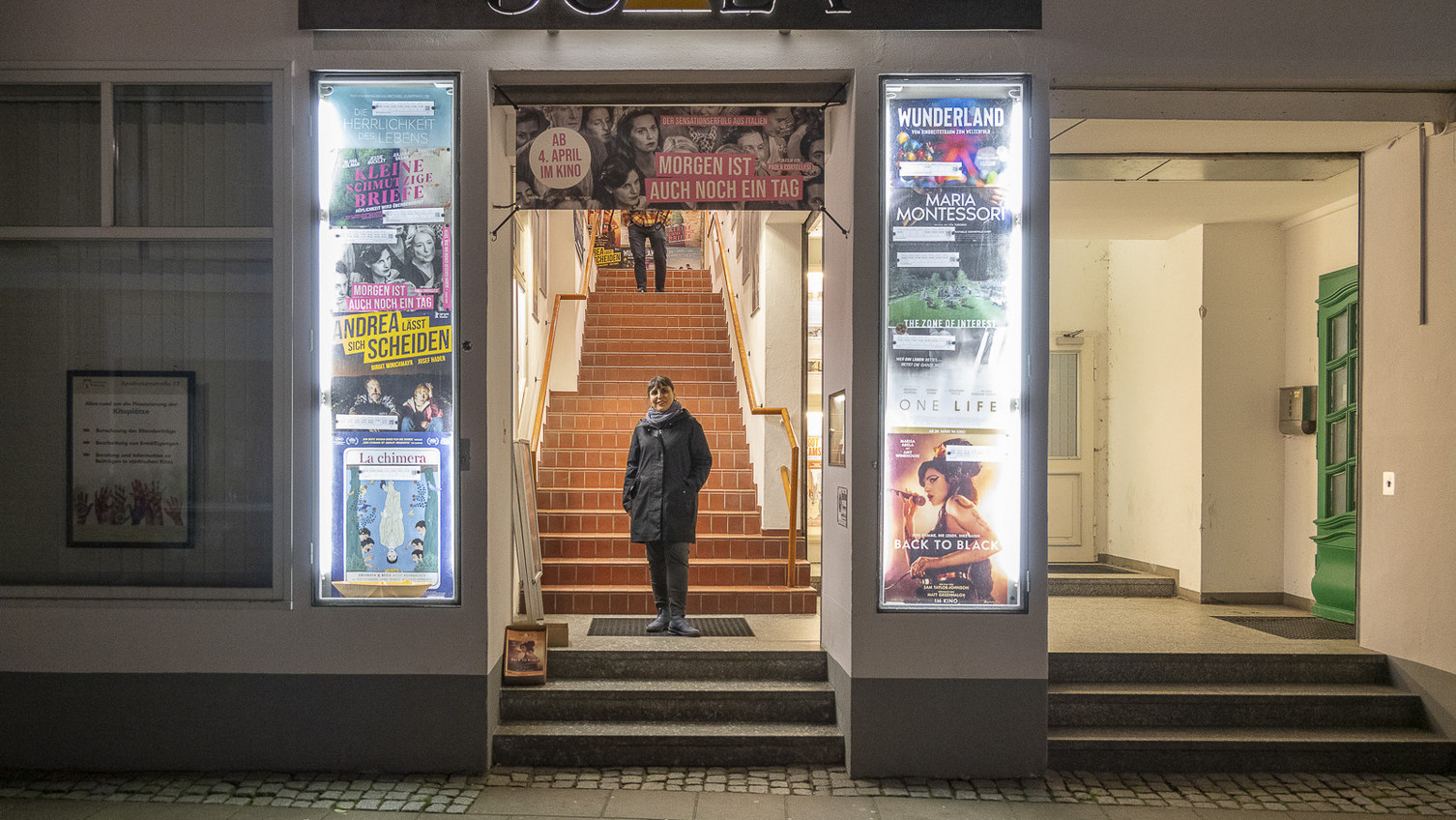Filming Hope
Iranian Filmaker Mina Keshavarz as a guest at the LIAS
2024-04-18 Following the public screening of the 2014 film Profession: Documentarist on 10. April at SCALA Arthouse Cinema, LIAS had the pleasure of welcoming film director and producer Mina Keshvarz to an informal workshop with LIAS fellows to discuss her most recent cinematic projects.
Mina’s engaged and critical cinematic work overlaps with the research themes of several of the fellows currently at LIAS, especially her focus on the relevance of techno-aesthetic practices such as filmmaking to create alternative spaces and relationships in times of crisis.
The point of departure for the workshop was the screening of two additional recent works. Mina Keshavarz’s short film Phobos (2023), which was created as part of the film project Iran-Sense of Place developed by Afsun Moshiry in partnership with the Wim Wenders Foundation, opens a poetic and experimental perspective on Bushehr, the city on the Persian Gulf where Mina Keshavarz spent her childhood. The film takes viewers on a surreal journey through winding, abandoned alleys of a city now strangely empty and in smoking ruins as Mina Keshavarz searches for her home, family, and friends. It represents an allegory of a place estranged from her by violence, destruction and flight.
Mina’s latest project, still in development and part of her residency at the Akademie der Künste, is the film project Hope Against Hope, for which she was able to present the teaser. Inspired by the Russian novel of the same title by Nadezha Mandel’shtam, the creative documentary, to be completed in 2025, will consist of excerpts from an archive of Iranian activism since the Islamic Revolution of 1979. Drawing on material from private collections as well as public repositories, the film project will engage with Iran’s moments of historical opening at which a different Iran was emergent but then suddenly foreclosed by repressive forces. Besides preserving the innumerable possibilities for an alternative future for Iran, the film serves as an act of resistance to the regime’s efforts to control the popular memory of the recent past through the systematic erasure of any testimony to the many endeavours of popular resistance. It represents the outcry of a generation born after the Revolution that has repeatedly pushed for women’s rights, greater freedom of expression, and a strong civil society. It is also a critical reflection on that generation’s hopes, which in hindsight seem to have been naïve.
The political developments in Iran, especially since 2019, have shattered any glimmer of faith in the possibility of a government that will act in the interest of citizens’ welfare. “But maybe this loss of hope is not such a bad thing?”, Mina Keshavarz remarked. Looking back, she felt that maybe hope had sustained in her generation for too long the illusion that reform was possible. Maybe it would have been more fruitful to have lost hope sooner that change through citizen activism and reform was possible? Ultimately, even the reformist forces, in whom her generation had once placed so much faith, have been imbricated in concerted acts of violence and repression. Perhaps losing hope and simply facing the dark reality of power and powerlessness can open perspectives for new, creative ways forward?




